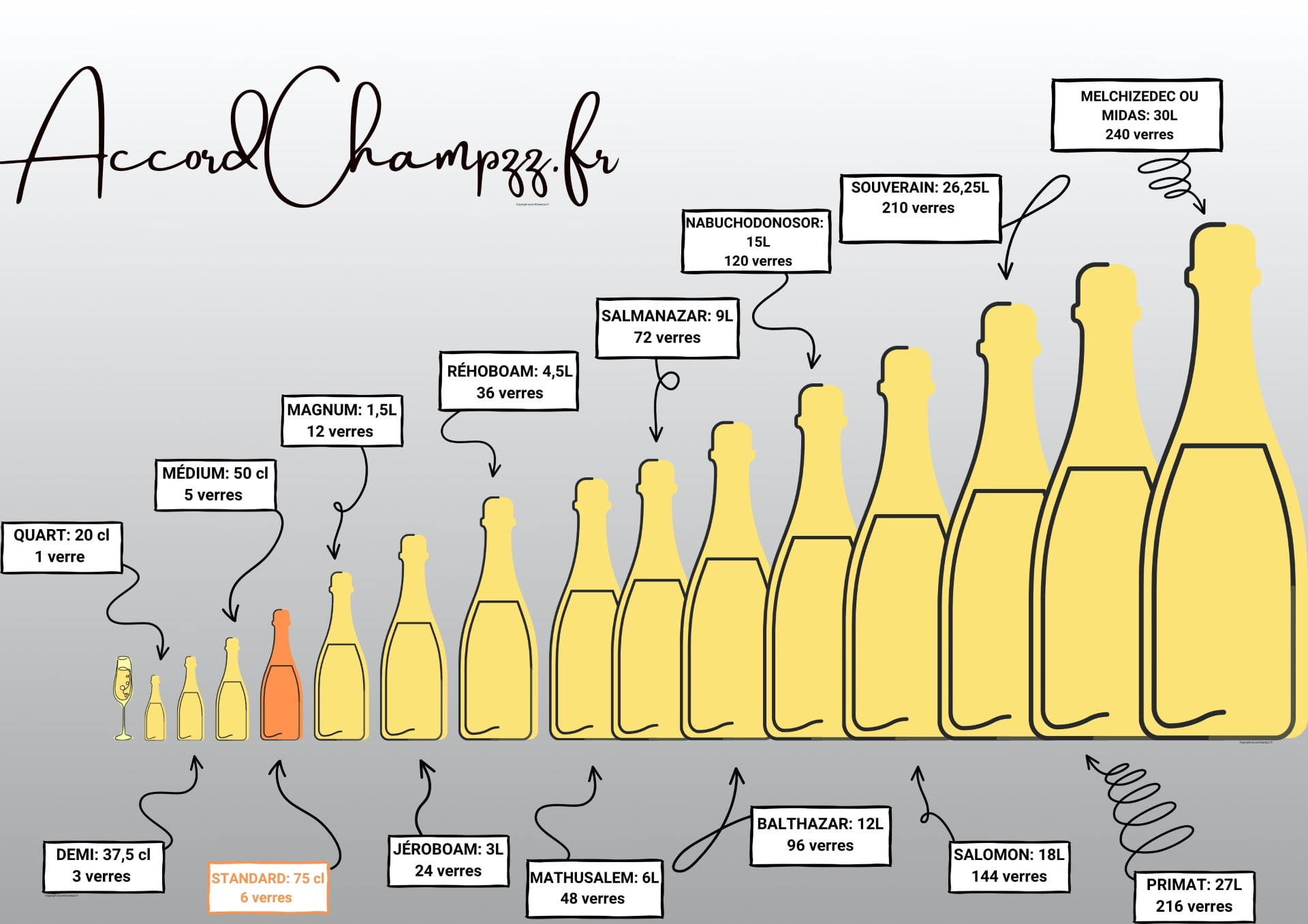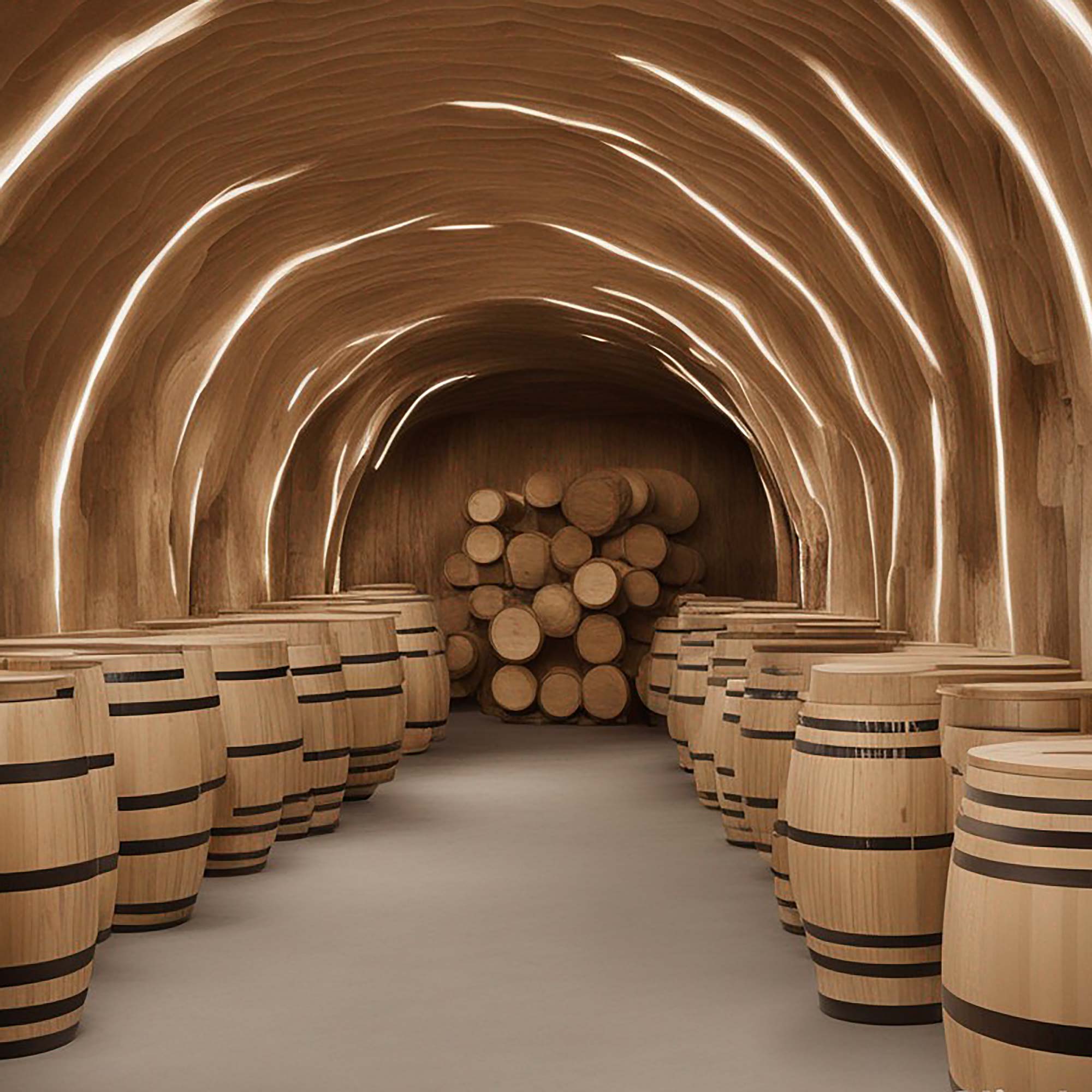Le saviez-vous ?
Il y a 15 différentes tailles pour une bouteille de Champagne.
La bouteille de champagne a une longue histoire remontant au 17e siècle en France, attribuée souvent au moine bénédictin Dom Pérignon. À l’origine, les premières bouteilles étaient en verre épais et irrégulières, conçues pour résister à la pression du gaz carbonique.

Au fil du temps, différents types de contenants ont émergé. La bouteille de champagne standard, appelée « bouteille champenoise », contient 0,75L. Les magnums (1,5 litres) et les jéroboams (3 litres) sont des formats plus imposants. Les Salmanazars (9 litres) et les Nabuchodonosor (15 litres) ou même le MIDAS (30L) représentent l’extrême en terme de volume.
L’écart de qualité entre ces contenants réside principalement dans la manière dont le vin vieillit. Les bouteilles plus grandes ont une plus faible surface de contact entre le liquide et le bouchon, ralentissant le processus d’oxydation. Cela peut donner des arômes plus complexes et une meilleure intégration des saveurs, faisant des formats plus grands un choix pour le vieillissement.
Cependant, la manipulation de ces grandes bouteilles peut être délicate, et le coût peut être significativement plus élevé. Ainsi, le choix entre les contenants dépend souvent de l’occasion et de la préférence du dégustateur, avec une tendance à privilégier les formats standards pour une consommation plus courante et les formats plus grands pour des célébrations spéciales ou le vieillissement prolongé.
Fabrication :
La fabrication d‘une bouteille de champagne commence par la fusion de matières premières telles que le sable, la soude et la chaux pour former du verre. Ce verre est ensuite soufflé dans un moule pour créer la forme de base de la bouteille. Après le formage, la bouteille est refroidie et durcie. Le col et le fond de la bouteille sont façonnés, renforcés pour supporter la pression du gaz carbonique. Une inspection minutieuse est effectuée pour garantir la qualité, puis les bouteilles sont prêtes à être emballées.
Lexique : Formage de la paraison : Un souffleur de verre forme une boule de verre appelée “paraison” en la soufflant dans un moule. Cette paraison a la forme approximative de la future bouteille.





Bravo 👍👏
Merci
Thank you for sharing this insightful article! I found the information really useful and thought-provoking. Your writing style is engaging, and it made the topic much easier to understand. Looking forward to reading more of your posts!